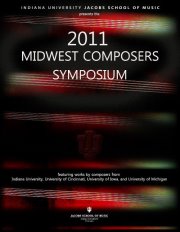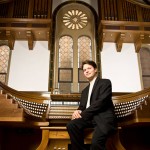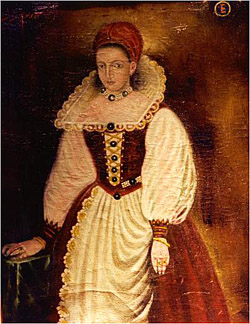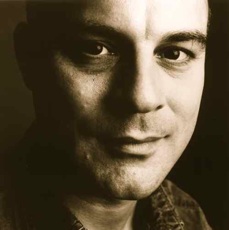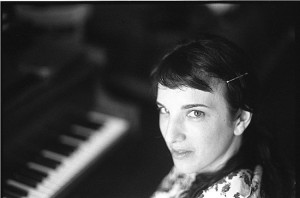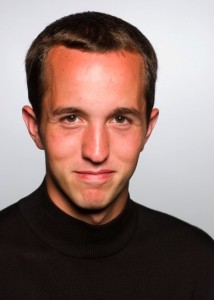
Time Out New York’s Steve Smith is sparing with the 5-star CD reviews, but he gave his highest score to Drawn Only Once, Due East’s New Amsterdam release. It features two beguiling multimedia works by John Supko, which feature video, electronics, Due East (Erin Lesser, flute and Greg Beyer, percussion), as well as a number of other instrumentalists and vocalists. These various elements are overlaid in a busy patchwork quilt, sometimes contemplative, at others dizzying: but it’s always a beguiling sound world. Despite the sometimes dense colloquy of events found on Drawn Only Once, the release will likely draw listeners back to fathom its depths in successive hearings.
Lesser and Beyer live in Wisconsin and Illinois, respectively. But on Monday night, they’re bringing Supko’s music to Galapagos Art Space, which will be bathed in the glow of video and the envelopment of surround sound.

Sharing the bill with them is another New Amsterdam artist – Gregory Spears – whose newly released Requiem is his debut CD. This is another disc that’s spent a lot of time in the short stack near my favorite listening spot, ready to be pressed into service for repeated hearings.
Spears combines early music instruments and singers with a 21st century aesthetic sensibility in a contemplation of mortality that eschews both dogmatism and morbidity. Although it’s a far more ambient motivated work than the Fauré Requiem, Spears’ essay in the genre shares a comforting and cautiously affirming demeanor with its predecessor, as well as a sensuousness of sound and intriguing modality that is most fetching.
Doors open at 7:00 and the show starts at 8.
Galapagos Art Space is located at 16 Main St, Dumbo, Brooklyn.
Call 718/222-8500 for more information.
